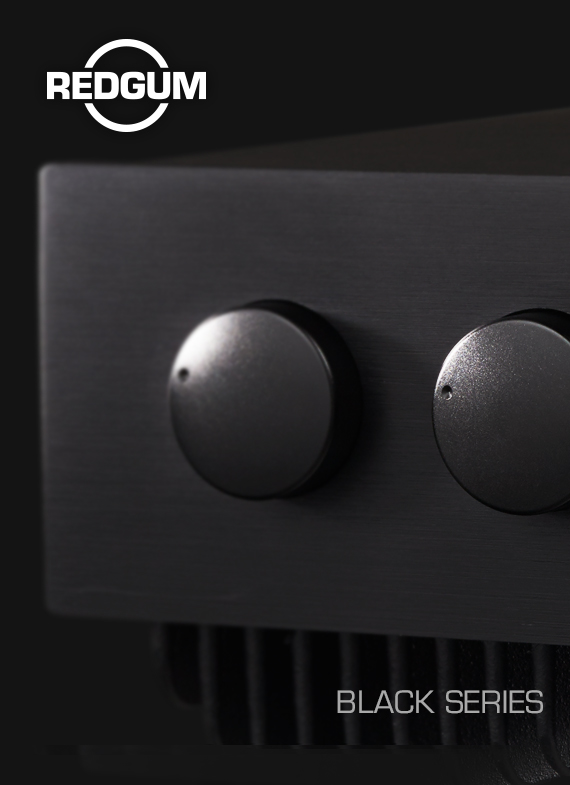WHO WE ARE?
(… even back then in 1997!)
A lot has been written about which sounds better – Vinyl recordings or Compact Disc recordings. The tracking distortion and inherent noise of vinyl players is a permanent and, we think, unacceptable feature, but we happen to agree that a VERY good vinyl system has impact that a lot of C.D. systems seem to lack. During the last 30 years we have repaired and serviced over 17,000 HiFi systems and have observed countless exotic (and more mundane) amplifiers working hard (and easy) into complex and simple loads. The complex interaction and wave-forms seen during this time have permanently changed our thinking on what is, or is not, a good amplifier.
In the last few years we have spent a lot of time studying how the bass impact of vinyl players – particularly through exotic valve amplifiers – is a function of the RIAA equalization curve and the inherent limitations of the output stages of the amplifier. The frequencies we were interested in were all below 50Hz – with particular emphasis on those below 20Hz!
Anyone who has been to a live orchestral performance knows that there is an impact that is felt rather than heard, and just winding up the volume on your HiFi does not create that effect.
We finally decided to put into practice all this information accumulated over the years, with particular emphasis on detail and clarity but not compromising impact in the bass. This was the impetus that led to the REDGUM amplifier.
Our overall feeling was to process the sound as little as possible and, to this end, we did some hard thinking about digital recordings. There are some interesting criteria not previously used (to our knowledge), namely, that the loudest possible passage recorded on any C.D. is when all 14 bits are “on”, resulting in the maximum recorded number 15384. No compact disc can produce a higher recorded level!!! Thus, Compact Disc output is predictable. This information was used to consider how much gain/amplification was required to drive any amplifier to its maximum output.
So the next question was whether we should use valves or transistors. Both have limitations. Valves are inherently noisy and deteriorate from the first moment of use; transistors are quieter but cannot tolerate abusive overloads and are prone to self destruct! We thought that what would be ideal would be a solid-state valve – a MOSFET (Metal-Oxide doped Silicon Field Effect Transistor).
We worked extensively on High Power MOSFET amplifiers as sole “Official Warranty Service” for several brands of these amplifiers during the 1970s and 1980s and we decided to re-evaluate these devices as they have also improved over the years.
Like many designers before us, we eventually settled on the basic circuit from the manufacturer’s handbook on MOSFET amplifier design, but incorporating much faster and ‘stronger’ MOSFETS than the original specification. The circuit incorporates many local and overseas “Go-Fast Modifications”, that are often offered as after sale upgrades by specialist HiFi shops.
CRITERIA
(then as now)
The final criteria decided upon to create a REDGUM amplifier were:
- Highest possible peak current and rise time – at the output terminals
- Minimum ‘processing’ of music in order to reach realistic sound pressure levels
- Shortest circuit paths practical
- Long life without quality deterioration
- No annoying ‘blown fuse’ syndrome – it must always work
- Realistic pricing
CONSTRUCTION TECHNIQUES
(then as now)
- Dramatic changes in output impedances were achieved by using the latest design of MOSFETs, ultra-low resistance wiring in speaker line and power supply lines, all silver soldering (pre-RoHS) and peak current enhancements as close as possible to the final output devices.
- A high-gain power amplifier without preamplification was used – just sufficient gain to drive the amplifier into clipping on the loudest transients recordable on CD if the volume control is fully advanced.
- A compact input control board with all controls as close as possible was used with extensions to traditional operating positions.
- All connection points are gold-plated to resist tarnishing forever; all resistors are 1% tolerance metal-film, all on-board capacitors rated at 105 degrees Centigrade and the entire amplifier is soldered with Silver Solder (pre-RoHS). Manual volume controls are made of conductive plastic, not carbon deposit, and have a suggested life of 25,000 operations, input switching is by a silver-plated switch with a typical life 10,000 operations. This is a useable lifetime probably in excess of 20 years!
- REDGUM amplifiers are inherently stable into capacitive and inductive loads and no current limiting is employed. If the amplifier is driven into short circuit or unusually low impedances, a thermal output will shut down the power supply, which will then be restored once the internal temperature of the amplifier has fallen to an acceptable level.
- Not using insane bunches of components where one unit will do, and using underrated transformers as a method of ultimate current limiting produces a REDGUM.
REDGUM AMPLIFIERS
What has always made a REDGUM different?
The stereo-imaging and detail are really stunning, the follow-through hiss of a cymbal crash is incredibly realistic as is the bass impact of a bass drum in a brass band.
Playing dance music really makes you feel like dancing!
The detail and separation of a full orchestra really allows you access to the separate instruments. We have actually heard the pages of music turned during performances!
Choral work becomes understandable again!
Brass has that crisp bite – without being splashy.
Organ works – feel the foot pedals go all the way down!
The lack of noise in this amplifier really gives the impression of a dramatically increased dynamic range.
The tight control of the REDGUM amplifier will really make your collection come alive.
So experience the incomparable with a REDGUM amplifier.
All REDGUMs
All REDGUM amplifiers have ultra-high current output stages
All REDGUM amplifiers use gold input and output connections
All REDGUM amplifiers use purpose-designed aluminium heat sinks for greater cooling
All REDGUM Amplifolia amplifiers use solid one piece Red Gum wood front panels
All REDGUM Amplifolia amplifiers are Australian designed & constructed
All REDGUM Amplifolia amplifiers are hand-built and burn-in tested
All REDGUM amplifiers have a 7 year warranty

